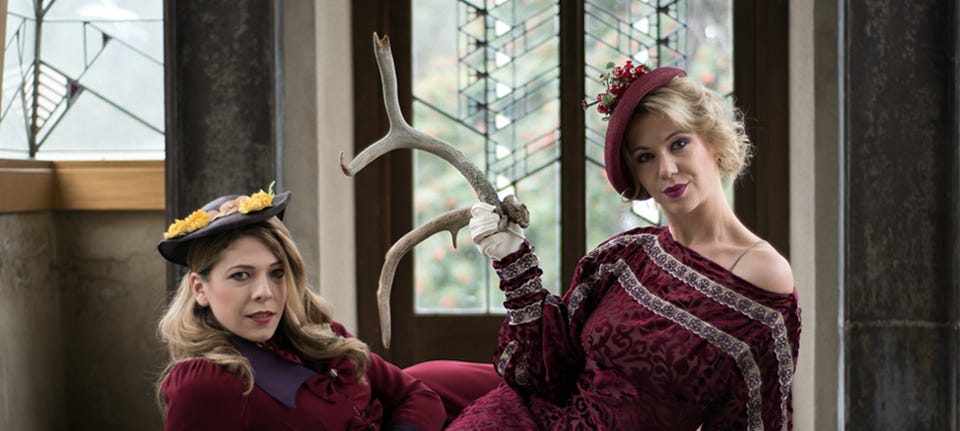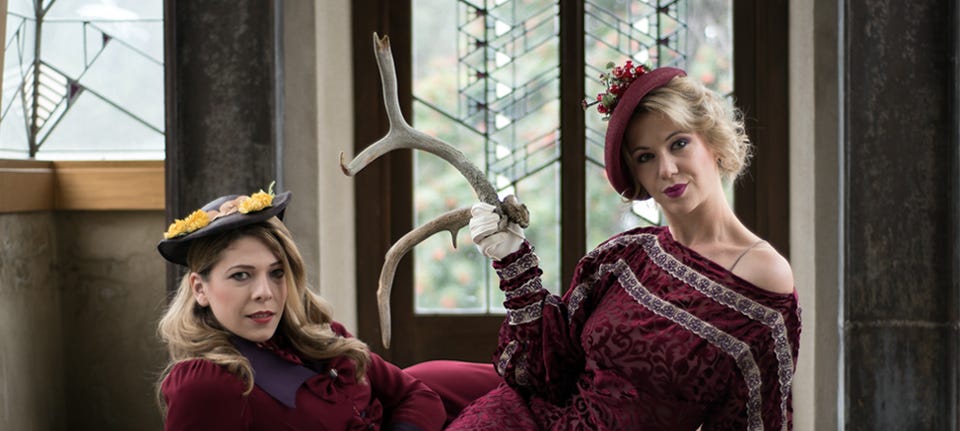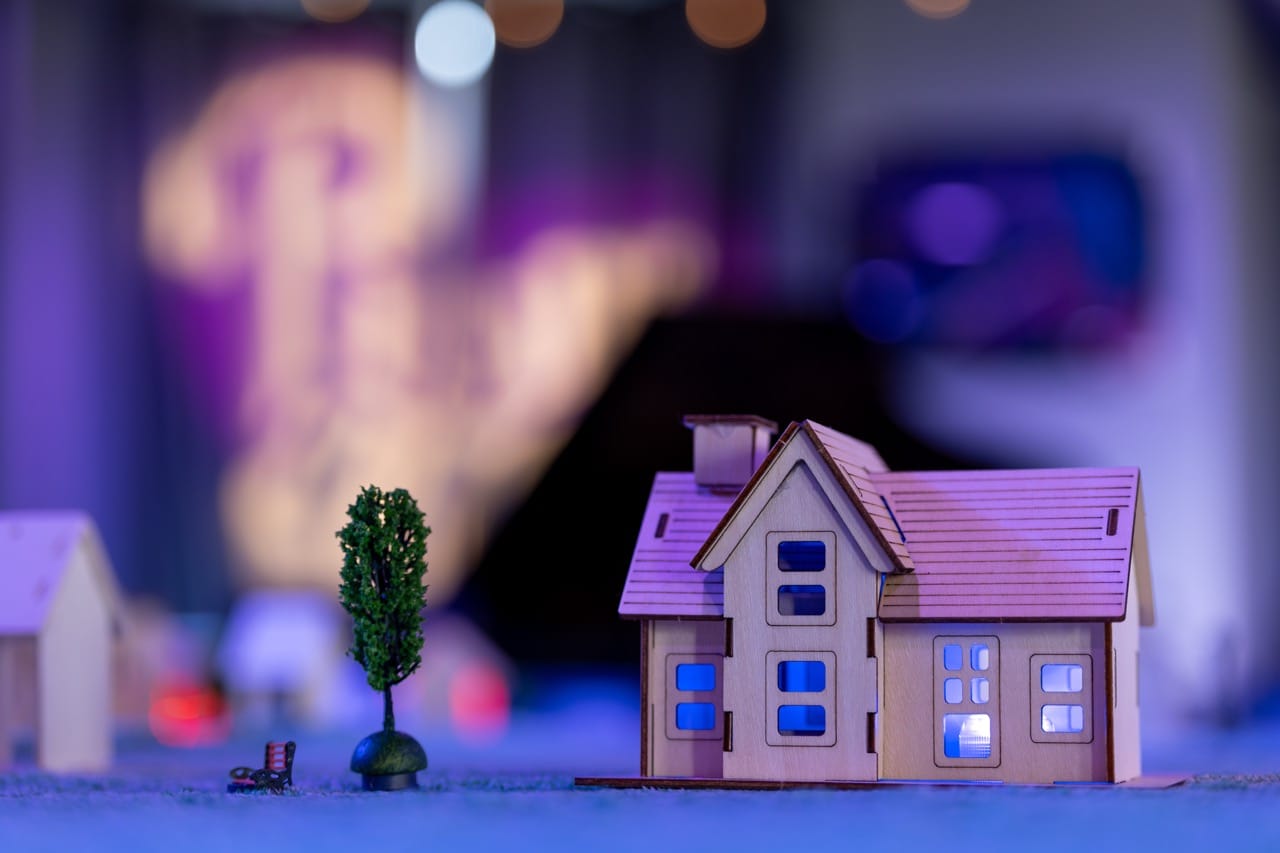
Before you step inside the home of Stephanie “Fefu” Beckmann you’re going to need to put on some booties. Right over your shoes. The cloth kind with the elastic that bunches around your ankles and keeps your filthy soles from touching the floor.
Not because the house is a crime scene, although the signs peppered all around the outside of the house warning of gunshots suggests that maybe that is going to be a concern. No.
You’re wearing booties because you’re a good guest and Fefu’s house is a tentative UNESCO World Heritage Site. Because Fefu’s house is actually the Hollyhock House, the Frank Lloyd Wright designed home that was built for Aline Barnsdall as part of her ambitious, never completed arts complex on top of Olive Hill in East Hollywood.
The Hollyhock House was Frank Lloyd Wright’s first L.A. project, and after a recent restoration and preservation effort it has reopened to the public as part the Barnsdall Art Park, one of the crown jewels of the civic life of Los Angeles.
Needless to say: a 1921 house built for an oil heiress with a love of theatre that’s been restored to it’s Jazz Age glory pretty much cries out for being put to good use as a site-specific theatre setting. Maker knows it was my thinking the first time I donned the booties and stepped inside the building, with it’s aggressive attention to detail and commanding views of everything worth looking at in Central L.A.
Director Kate Jopson (Second Skin), clearly thinks the same.
She and her producing partner JR Bruce had pitched the folks at Barnsdall on doing a show, before settling on Fefu and Her Friends, a co-production between Circle X Theatre and J.U.S.T. Toys Productions of Cuban American playwright Maria Irene Fornes’ 1977 feminist experimental theatre piece that was written with something like site-specific staging in mind.
The story of Fefu and Her Friends revolves around a group of activists — all women — who have gathered at Fefu’s house in the spring of 1935. Their aim is to put together a presentation for an educational charity, but simmering under the surface of their exchanges is an existential dread about the role of women in a patriarchal society.
In so many ways Fefu and Her Friends is a kind of archeological artifact.
The play, which premiered 40 years ago, itself looked back 40 years to an era when women’s roles were even more circumscribed than they were in the 70’s and manages to point forward to the charged political environment we find ourselves in today. Just how much has the world changed for women hangs over piece.
In the same breath Fornes’ structure presages the multi-tracked theatre of modern immersive. The second act of the play breaks up the audience into four groups, who rotate through one of four scenes in succession before the whole is brought back together for the final act. By then the opportunity has been provided to get a more intimate sense of who these women are.
Of this middle section the most striking scene delves into the story of Julia (Julia Ubrankovics), who is wheelchair bound for the duration of the play by a mysterious condition that is either psychosomatic or spiritual in nature — depending on your point of view. This scene, along with a late in the third act speech by Paula (Kacie Rogers) that strikes the wealth gap on the nose as forcefully as anything written today could, make the case for producing Fefu in this day and age.
Two things, unfortunately, stood in the way of this Fefu firing on all cylinders the night I saw it.
The Tyranny of Others
The first is something that’s more or less beyond the control of the production. And that was the presence of a seriously sloshed audience member who was assigned to the same group that I was.
When he wasn’t giving DVD commentary to his boyfriend, he was checking his phone. When he wasn’t doing that, he was finding everything extra hilarious. And the whole time he smelled like he had fallen into a barrel of whiskey and didn’t bother to wash off afterwards.
This wouldn’t be as much of a problem in a traditional play: but in a control-tracked site-specific piece that puts you up close and personal with the actors for the better part of an hour the presence of such a person is a disaster. My appreciation of the Julia scene in the second act might have only been possible thanks to the fact that he was seated on the opposite side of the room at that point, as opposed to being sandwiched in next to me.
An immersive structure different than the one called for in the text could also have mitigated the problem. Best of all would have been if humans weren’t mostly terrible as a species and didn’t make a habit of getting wasted before going to a show.
Cracks in the Foundation
With a drunk audience member already keeping me out of relaxing into the story, some of the clunkier parts of the structure started to become visible.
Some of the scenes in the “round robin” second act felt like they had a fair amount of padding in them, in order to facilitate the need for them to be of more or less equal length. Initially unfamiliar with the structure of the text, I thought at first that Jopson was trying to force a square peg into a round hole. Not something I expected from a director whose previous site-specific work charmed me so much.
Instead it seems as if the text of the play itself may have some of these issues, and could benefit from an aggressive edit that might trade some shades of depth for clarity and speed. There’s something wonderful about the presence of an eight woman ensemble, and at the time of its production the original Fefu clearly blew some minds, but the form has evolved much in 40 years — even if the society it depicts has had less success in moving forward.
Fornes’ language — at times poetic, at times bracingly straightforward — also seems to call for some Jazz Age pizzazz that wasn’t connecting that night. At least not uniformly. I couldn’t quite put my finger on what was keeping it all out of synch. Was it the need to keep the scenes within a minute or two of each other? A heightened awareness activated by the drunk guy? The text itself or some other factor?
In any case it was enough to keep me at an arm’s length despite Jopson’s best efforts and her accomplished skill at putting bodies in space: even when that space comes with some pretty heavy caveats. You can’t do anything and everything you might want in a building that the United Nations has decided is important, and yet Jopson seems to get away with more than you might think is possible with her staging.
As an exercise in the “cinematic” advantages of site-specific theatre this production of Fefu excels. Yet the play itself ends up being trapped between eras: never quite fully finding it’s own place in time.
Fefu and Her Friends, written by María Irene Fornés and directed by Kate Jopson, completes its sold-out run at the Hollyhock House in the Barnsdall Art Park on May 28th. Tickets were $60.















Discussion